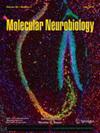SRF 促进 m6A 甲基转移酶 METTL3 对 Gem 表达的转录抑制,从而抑制癫痫中的神经元损伤。
摘要
我们进行了生物信息学分析,以筛选转录因子 SRF 基因敲除小鼠的相关表达数据集。目的是研究 SRF 与 m6A 相关基因之间的关系,预测 SRF 如何调控由 METTL3 介导的 GEM 基因的 m6A 修饰,并探索与神经创伤相关的潜在分子机制。研究人员利用疾病基因数据库(如 GeneCards、DisGeNET 和 Phenolyzer)和转录因子数据库(如 TFDB 和 TRRUST)获取癫痫相关基因和转录因子。然后选择交叉点。从 GEO 数据库中获取 SRF 基因敲除癫痫小鼠的表达数据,用于筛选差异表达基因。通过 WGCNA 共表达分析,筛选出与疾病相关的重要模块基因。对这些基因与差异表达基因进行交叉分析,然后进行PPI网络分析和GO/KEGG富集分析。此外,还使用 Cytoscape 软件的 cytoHubba 插件选择了核心基因。对GEO数据集中的m6A相关因子进行了差异表达分析,并分析了SRF与m6A相关因子及核心基因之间的关系。利用AnimalTFDB和SRAMP网站分别预测了SRF与METTL3启动子和靶基因Gem的m6A结合位点。我们发现转录因子SRF可能是神经元发育过程中癫痫的关键基因。进一步的WGCNA分析表明,129个模块基因与SRF敲除癫痫相关,这些差异表达的基因主要富集在神经活性配体-受体相互作用通路中。最终结果表明,敲除SRF可能会抑制METTL3的转录,从而抑制Gem的m6A修饰,导致Gem表达上调,从而在神经元损伤中发挥重要作用。敲除 SRF 基因可能会抑制 m6A 甲基转移酶 METTL3 的转录,从而抑制 METTL3 介导的 GEM 基因的 m6A 修饰,促进 GEM 基因的表达,导致癫痫相关神经元损伤的发生。进一步研究发现,SRF 的过表达可能会增强 METTL3 的转录,从而促进 GEM 的 m6A 修饰,导致 GEM 表达下调。这一过程可调节癫痫小鼠神经元的氧化应激,抑制炎症反应,减轻相关损伤。此外,我们还建立了体外神经元癫痫模型,并采用 qRT-PCR 和 WB 等实验技术来评估 SRF、METTL3 和 GEM 在海马组织和神经元中的表达。实验结果与我们的预测一致,表明过表达 SRF 可抑制癫痫相关神经元损伤的发展。本研究揭示了敲除 SRF 基因可能会抑制 m6A 甲基转移酶 METTL3 的转录,从而抑制 METTL3 介导的对 GEM 基因的 m6A 修饰,进而促进 GEM 基因的表达,导致癫痫相关神经元损伤的发生。

A bioinformatics analysis was conducted to screen for relevant expression datasets of the transcription factor SRF knockout mice. The aim was to investigate the relationship between SRF and m6A-related genes, predict how SRF regulates the m6A modification of GEM genes mediated by METTL3, and explore potential molecular mechanisms associated with neurotrauma. Disease gene databases such as GeneCards, DisGeNET, and Phenolyzer, and transcription factor databases TFDB and TRRUST, were used to obtain epilepsy-related genes and transcription factors. The intersection was then selected. Expression data of SRF knockout epilepsy mice were obtained from the GEO database and used to filter differentially expressed genes. Important module genes related to the disease were selected through WGCNA co-expression analysis. The intersection between these genes and the differentially expressed genes was performed, followed by PPI network analysis and GO/KEGG enrichment analysis. Furthermore, the core genes were selected using the cytoHubba plugin of the Cytoscape software. Differential expression analysis was performed on m6A-related factors in the GEO dataset, and the relationship between SRF and m6A-related factors and core genes was analyzed. The m6A binding sites of SRF with the METTL3 promoter and target gene Gem were predicted using the AnimalTFDB and SRAMP websites, respectively. We found that the transcription factor SRF may be a key gene in epilepsy during neuronal development. Further WGCNA analysis showed that 129 module genes were associated with SRF knockout epilepsy, and these differentially expressed genes were mainly enriched in the neuroactive ligand-receptor interaction pathway. The final results indicate that knocking out SRF may inhibit the transcription of METTL3, thereby inhibiting the m6A modification of Gem and leading to upregulation of Gem expression, thereby playing an important role in neuronal damage. Knocking out the SRF gene may inhibit the transcription of m6A methyltransferase METTL3, thereby inhibiting the m6A modification of GEM genes mediated by METTL3, promoting GEM gene expression, and leading to the occurrence of epilepsy-related neuron injury. Further investigation revealed that SRF overexpression can potentially enhance the transcription of METTL3, thus promoting m6A modification of GEM, resulting in downregulation of GEM expression. This process regulates oxidative stress in epileptic mouse neurons, suppresses inflammatory responses, and mitigates associated damage. Additionally, an in vitro neuronal epileptic model was established, and experimental techniques such as qRT-PCR and WB were employed to assess the expression of SRF, METTL3, and GEM in hippocampal tissues and neurons. The experimental results were consistent with our predictions, demonstrating that overexpression of SRF can inhibit the development of epilepsy-related neuronal damage. This study reveals that knockout of the SRF gene may suppress the transcription of m6A methyltransferase METTL3, thereby inhibiting m6A modification of the GEM gene mediated by METTL3 and subsequently promoting the expression of the GEM gene, leading to the occurrence of epilepsy-related neuronal damage.

 求助内容:
求助内容: 应助结果提醒方式:
应助结果提醒方式:


